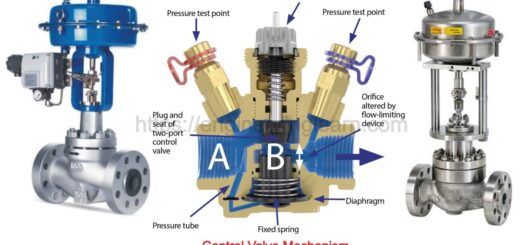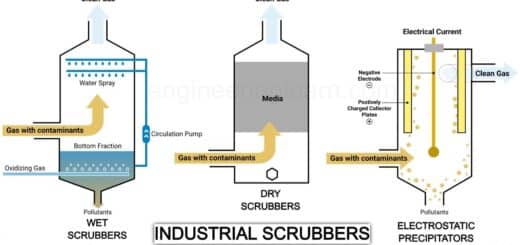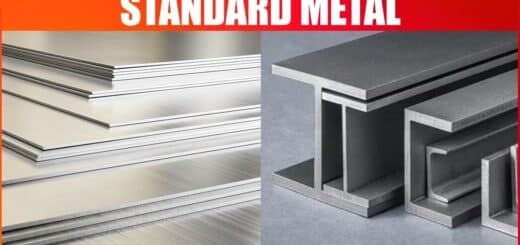20 Parts of Crane and Their Functions [Complete Guide]
![20 Parts of Crane and Their Functions [Complete Guide]](https://engineeringlearn.com/wp-content/uploads/2023/06/Parts-of-Crane-1024x539.jpg)
Introduction
20 Parts of Crane and Their Functions [Complete Guide]: – Cranes are different in relation to different pieces of construction equipment on the grounds that at their most basic function, they don’t require other machinery or power to function. Numerous safety guidelines related to cranes relate back to load security. The load ought to be lifted as close to the crane as could really be expected and as low to the ground as possible. Continuously test load limits and ensure that materials are appropriately secured prior to lifting them.
What is a Crane?
A crane is a machine that is utilized to lift and move heavy and weighty loads, machines, materials, and some goods for different purposes. Lifting loads past human capability is utilized. Crane is one of the material handling tools with large capacities starting from one place and then onto the next either in an upward direction or in a horizontal direction. It’s generally utilized on building projects, warehousing, industrial, and different works related to height. Crane likewise can be operated for lowered materials to low ground level.
Another ability existed on a crane is to hold, and move, in any event, for unloading or dumping materials. The design of cranes has evolved to address industrial requirements, and in the modern era, they coordinate with simple systems to accomplish complex lifting techniques. Crane operation safety and security is unique to different pieces of equipment in light of the fact that the actual machine isn’t moving. Safe operations of and around cranes depend the same amount of on the operator as it accomplishes for those on the ground.
Parts of Crane
- Hook
- Wire Rope and Sheaves
- Hoist
- Boom
- Jib
- Counterweights
- Turntable
- Tower Peak / Apex
- Tower / Mast
- Bridge
- Outriggers
- Cabin
- Operator’s Cab
- Controls
- Electrification
- Bumpers
- End Effector
- Engine
- Wheels and Tracks
- Certified Operator
Your crane company will without a doubt do their best to educate you on the crane you’re renting, and they probably likewise supply their own workers and operators to ensure you get the best insight. In any case, it’s a really smart idea to understand what you’re getting, since understanding the parts and functions of different crane parts can assist you with understanding the type of crane your job requires.
1. Hook: ( Parts of Crane )
The Hook is the main and fundamental lifting point of the crane. All crane structure gives support while lifting a load, yet the only hook reaches out to the lifting load. On the construction site, assuming that you want to move the load from one location to another, the user utilize the hook to clamp the load and lift it by crane. As we probably are aware, we utilize a crane to lift heavy and weighty loads. Thus, using high-strength material for the hook is vital.
It ought to be durable and robust to sustain the high load and jerk load. In the event that hook design and shape are according to the standard, there are fewer possibilities of failure because of high load. In this way, it is important to consider the design factors while designing a hook. Out of all crane parts, hook design is critical and significant.
2. Wire Rope and Sheaves: ( Parts of Crane )
Wire ropes of the crane are made using steel by combining various ropes to make one wire rope. Combing various ropes increases or expands the strength of the wire rope. It is the only medium to connect or interface with the hook. It ought to have sufficient strength to sustain the lifting load and jerk load. The sheaves are available toward the end of the boom. Wore rope passes through the shave and connects or associates to the hook. The shave increases the load-carrying capacity of the wire rope. Wire rope is passed through the shave at different times to expand the weight distribution. The material of the shave plays a significant part when selecting it.
3. Hoist: ( Parts of Crane )
The Functional capability of the Hoist is to lift the load with the assistance of the wire rope and hook. It is lifting equipment mounted on the crane, which wounds thousand of meters of wire rope. So from the different high depths, you can lift the load and transport it to any point of the job site. The crane will only be a structure and remains stationary, if there is no hoist. The hoist provides the ability to lift the load and transport it to any location in the field.
4. Boom: ( Parts of Crane )
Boom is the fixed outreach of the crane. The boom is the long and robust part of the crane that can see it from a significant distance. It tends to be the Struss structure with less weight. Boom starts from the operator’s cabin and finishes at the shave from which wire rope passes. Boom strength is the primary parameter while designing a crane. From the hook, the load transfers to the boom through a wire rope. Because of the long length of the boom, it is important to choose higher-strength material. The boom upholds the wire rope cable and hook block, and it can pivot and raise to move to start with one location and then onto the next.
There are two types of boom: –
(A) Hydraulic Boom
It is a hollow structure wherein numerous cylindrical shape members are inside with diminishing cross-sections. To put it plainly, a telescopic boom that expands its length according to requirement.
(B) lattice Boom
It is made by connecting structural member welding. In short, it is a Struss structure. It expands the strength of the boom and decreases weight.
5. Jib: ( Parts of Crane )
jib plays an important role in that case. Its functional capability is to extend the outreach of the crane to lift the load. In the adaptive, we can see the extendable jib to accomplish an alternate outreach as per the requirement. Some jibs even have hinges, permitting them to have some up-down movement too. These can be critical while placing the load at a specific place, like in a building that is under construction.
6. Counterweights: ( Parts of Crane )
- Self-weight
- Counterweight
- Lifting weight
A boom has a long length. At the point when the crane lifts the load, it is important to balance the load to properly work the crane. Thus, cranes are utilizing counterweight to balance the lifting load. Without a counterweight, lifting the load is beyond the realm of possibilities. In any case, the crane gets damaged. The counterweight is generally on the opposite side of the lifting load. According to the lifting load, the counterweight adjust its counter length to balance the heap. According to the site location, you can move them and install them on the crane. For the most part, the material of the counterweight is iron.
7. Turntable: ( Parts of Crane )
Turntable cranes are a variation of the classic overhead crane design that considers the things being lifted to be rotated or pivoted horizontally. The Functional capability of the turntable is to permit the tower crane to rotate or pivot at 360 degrees in the field.
8. Tower Peak / Apex: ( Parts of Crane )
Tower peak of a crane is a kind of lifting structure which uses an upward mast or tower to support a functioning boom in an elevated position. It gives support to the wire rope to pass from the hoist to the front hook assembly to the loft or space load. Tower of a crane is a crucial part in the construction of tall structures, massive structures and projects which are complex. This gadget is made to control and guide heavy or weighty equipment at heights.
9. Tower / Mast: ( Parts of Crane )
The mast is the set of truss-like columns or segments that permit the crane to arrive at its ideal height. It has Struss member welded to make a mast. You can change or adjust its length as per the requirement or needs. The crane is secure because of the concrete foundation and the mast columns.
10. Bridge: ( Parts of Crane )
Bridge is the load-bearing part that runs the width of the crane system. This is the essential primary structural part of a lift that interfaces the runways and holds the hoists and trolleys. Bridges can be single or twofold beams. They can be of an encased box style or beam/support fabrication, dependent upon your necessities and the classification of load of the work they performed.
11. Outriggers
Outriggers and outrigger pads or cushions help to balance or adjust the crane, subsequently their other moniker of stabilizers. They likewise imply that cranes can be made to be a lot more smaller without the concern of an absence of equilibrium. Outriggers in like manner offer support when you’re not on exactly smooth ground or slopes.
Outriggers are an additional safety to the crane while transporting or moving any material on the site. It stretches out from the lower part of the crane and shifts the base wheels to stabilize the crane. There is a requirement for additional security as such countless people are working on the site. All outriggers ought to meet or surpass the weight requirements or prerequisites of a crane. Outriggers don’t compensate or make up for unstable land.
12. Cabin
The cabin is available on the mast where the counter jib, mast top, and boom meets. It is for the operator of the crane to sit in a comfortable position to operate the crane. The cabin is made of strong material with all security and safety precautions and is accessible to the basic requirement of the individual. For better visibility there is a glass in front to the see the site.
13. Operator’s Cab
The Operator’s cab was at first a platform where the controls were found or located. In today’s time, Operator’s cab comprises a heap of levers, switches, and buttons, contingent upon the sorts of cranes you’re utilizing. The Operator’s cab is designed and intended to provide a decent perspective of the construction site, a safe and secure place for the operator to stay while the crane is in operation, and a safeguarded region for the crane’s many controls.
14. Controls
Crane controls will rely upon the particular capabilities of the crane. Controls can be mounted, battery-fueled regulators, or a hanging pendant variety. The controls operate or work the drive and hoists motors to control the crane and the hoist for exact positioning of load. Portable cranes will likewise have driving controls, including brakes, throttle, and steering, while road-legal cranes will have extra controls as required by the Division of Transportation for legitimate operation on the roads, like headlight and signal light controls, a horn, parking brakes, windshield wipers, and similar necessities.
15. Electrification
How much amount of power availability dictates the electrification systems (links) needed for the lifting system. protected guide bars and power boxes bring power from the building structure to the lifting system.
16. Bumpers
They are designed and intended to decrease crane impact and energy bumpers carry the crane to a controlled rest and stop by limiting the force at which the crane arrives at the finish of travel. Bumpers can be attached to a few parts of a crane.
17. End Effector
The end effectors are the “grab” part of the crane system. They can be quite simple as cabling or strapping, and there are many stock solutions for loads, be that as it may, end effectors are best when they are designed to lift any type of load. A custom end effector for your load lifting is more secure, quicker, and more precise.
18. Engine
Engine is one of the essential and fundamental equipment in any sectors essentially which are related to vehicles. The engine on a crane is consistently either diesel for portable cranes or electricity for tower or long-stretch crane installations. Most cranes comprise of four electric engines, including an articulated lifting engine which permits vertical motion and a distribution engine which controls how the crane moves along the jib by turning it.
19. Wheels and Tracks
Wheels and Tracks are the two options accessible for the crane. In the wheel crane, you can move it over the site according to the requirement. It is quite suitable for bumpy surface conditions. Track crane gives higher security than wheel cranes. For the track crane, you require a smooth surface for easy operation. Because of its high security, it is the first choice in most fields.
20. Certified Operator
Having a certified crane operator ensures that you can minimize risk and liability when your business has a crane in operation, forestalling injuries and damage to property. It’s vital that anybody operating a crane at your business is certified and stays aware of their certification requirements. If you might want to outsource your crane tasks or assignments, all of the riggers as well as operators ought to be certified and kept updated on the most recent training and security briefings in the industrial business.
Conclusion
Ascending high out of sight, cranes are essential and fundamental pieces of equipment with regard to construction. They lift, move, and set up materials. They do this by lowering a rope and hook down to the ground level where the construction workers are. Then the laborers or experts attach or interface a load in a safe way to the hook and the crane hoist up with the guidance or direction of a crane operator. The load should be lifted as close to the crane as could be anticipated and as low to the ground as could be possible or conceivable.
Continuously test load limits and ensure that materials are appropriately secured prior to lifting them. Cranes are an essential or fundamental kind of machinery utilized in many industries today. Operating a crane requires exceptional preparation due to the way that they are utilized to lift and move very heavy objects and committing an error can have deadly results.













